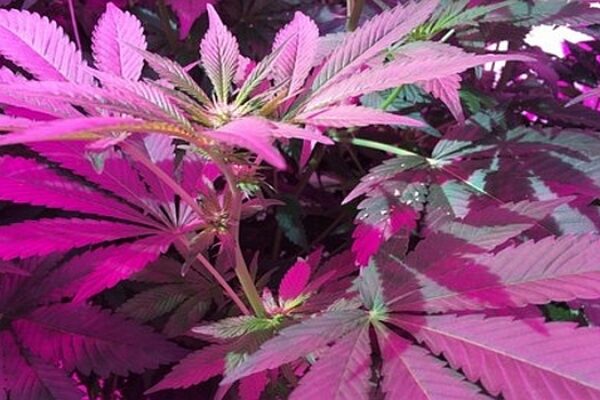
Medical marijuana grows well under LED lighting
The study, conducted earlier this year, measured the amounts of Cannabidiol (CBD) and Tetrahydrocannabinol (THC) produced. CBD is used in the Netherlands to treat such diseases as Multiple Sclerosis and THC is used to combat and alleviate Tourette syndrome, therapy-resistant glaucoma, weight loss, nausea, and vomiting. Both the demand for medicinal cannabis and methods for safe, reliable, and efficient production are growing rapidly worldwide.
The study focused on creating cultivation conditions where medicinal cannabis plants will thrive. The researchers paid special attention to lighting, but also considered other factors including temperature, moisture, plant nutrients, and the incidence of pests and diseases.
Two light sources were used in the research, SON-T and water-cooled LED units. LED-grown crops were exposed to two intensities of light: one that was equal to the SON-T lighting, and one considerably higher. Given that the study occurred in spring and early summer (April to June), an autumn situation was simulated using black-out cloth allowing no more than 100 µmol s-1 cm-2 of light to enter the greenhouse.
All plants were given a long light day for four weeks, then shorter daylight hours until harvesting. The plants grew profusely and produced dense foliage, but insects were discovered and high humidity caused fungus.
During harvest, photosynthesis, the plants’ fresh and dried length and weight, and the levels of THC and CBD were measured. Here’s what they found:
Medicinal cannabis can be grown in greenhouses under LED lighting.
The cannabis varieties in the study do well with high lighting levels.
Plants grown under a higher light intensity (400 µmol s-1 cm-2) produced a higher bud weight in comparison to those grown under a light intensity of 250 µmol s-1 cm-2. The THC content was higher in one cultivar; and lower in another. With regard to lighting optimization, it is advised to take into consideration a cultivar effect.
According to the research team, “In all varieties, LED lighting produced a higher content of active substances than SON-T with the same light intensity. Plants grown under SON-T produced heavier clusters of buds than those grown under 250 µmol s-1 cm-2 LED. In one cultivar, this also led to a higher total weight in terms of substances. In plants grown under 400 µmols-1 cm-2 LED, both the percentage as well the nominal weight of the substances were higher than that measured in the plants grown under 250 µmols-1 cm-2 SON-T.”
Related articles:
LED commercial lights boost plant growth, yields
LED-grown tomatoes are fine, says study
LED lighting grows oats and barley, says study
Roses spur new LED R&D initiative at Philips Lighting
 If you enjoyed this article, you will like the following ones: don't miss them by subscribing to :
eeNews on Google News
If you enjoyed this article, you will like the following ones: don't miss them by subscribing to :
eeNews on Google News




